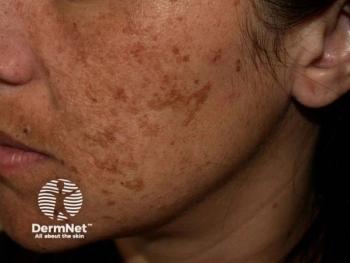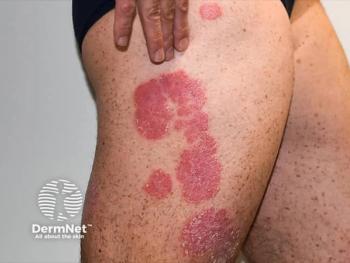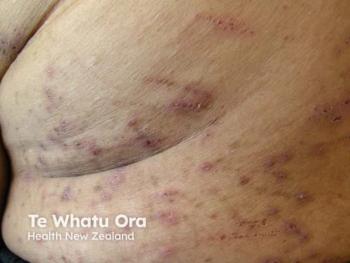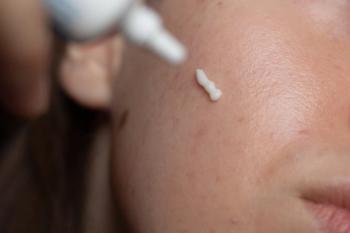
Poly-l-Lysine Biovectors with Vitamins A and C Effective for Atopic Dermatitis
Key Takeaways
- The study demonstrated significant improvements in DLQI and SCORAD scores, with reductions in erythema, dryness, and pruritus in AD patients.
- The treatment regimen was well-tolerated, with only minor adverse effects reported, and no AD relapses occurred during the study.
DLQI score reduced by 61.8% and SCORAD score reduced by 41.8% in patients after 28 days of treatment.
A new study analyzed a sequential dermocosmetic treatment that combines poly-l-lysine biovectors with vitamins A and C for atopic dermatitis (AD).1 AD is the most common chronic inflammatory skin condition, affecting up to 20% of children and up to 10% of adults. This product fulfills the unmet need for skincare for atopic skin formulated with natural active ingredients derived from plants.
“Since AD is a chronic skin disease that particularly affects young children, the greatest challenge is to develop new dermocosmetics that are effective and harmless to health and the environment, for everyday skin care,” the authors said.
The single-arm, prospective, open-label study included 14 women and 6 men with mild AD. All were between the ages of 24 and 63, with a mean age of 43.6. Fitzpatrick skin phototypes ranged from I to VI. Of the 20 participants, 9 had known allergies and 5 had asthma or allergic rhinitis
The poly-l-lysine G2/vitamin C formulation was applied in the morning, while the poly-l-lysine G3/vitamin A product was applied in the evening for 28 days. The therapy was able to be put on the face, hands, and body. Investigators used the Dermatology Life Quality Index (DLQI) and SCORAD scores to observe effectiveness. They also used a visual analog scale (0-10) for pruritus and sleep disturbance, as well as self-reported questionnaires for patient improvement and treatment satisfaction. These were recorded at baseline and at the end of the study.
At the conclusion of the study, the DLQI score was reduced by 61.8% and the SCORAD score was reduced by 41.8% Erythema decreased by 50%, dryness decreased by 60%, and pruritus decreased by 50%. All improvements were statistically significant. Self-assessment scores showed that scratching, redness, and irritation were all reduced while the skin was soothed, quality was improved, and damaged skin repair was reported. These were noted as early as the first day of treatment.
Two patients did have psoriasis, and their average PASI score was recorded. The mean score dropped by 46.7% from 0.8 to 0.4. The treatment regimen was well-tolerated, and no AD relapses were reported. Only 2 minor and transient adverse effects were reported, including a sensation of heat and slight desquamation.
Vitamin C stimulates tissue repair and regulates the inflammatory process, while vitamin A exerts a regulatory action on Langerhans cells.2 Combining these with a polylysine-based drug delivery system enhances these synergistic properties. These poly-aminos are obtained by green chemistry, which is biocompatible, biodegradable, and harmless to the skin. Other therapies, such as topical corticosteroids and calcineurin inhibitors, can maintain clinical remission but are known for causing local and systemic adverse effects.
“Understanding the complex interactions between active ingredients and skin barriers, and optimizing them for different populations and phototypes, also represents a crucial avenue for future research,” the authors wrote.
Future literature can also explore the long-term efficacy of these dermocosmetics, especially in larger, more diverse patient groups with an eco-responsible and holistic approach.
“These findings are consistent with previous studies, which demonstrated that vitamins A and C improve skin disorders by reducing inflammation and pruritus while strengthening the skin barrier, thereby enhancing both clinical outcomes and patient-reported satisfaction,” the authors concluded.
Want to hear more pearls and expert insights on AD? Join us at the annual
References
1. Nassar, B., Belhadj-Tahar, H., Jin, W. and Yang, G. (2025), A Prospective Open-Label Study of Tolerance and Effectiveness of Sequential Dermocosmetic Treatments Combining Poly-l-Lysine Biovectors With Vitamins A and C. Health Science Reports, 8: e70676.
2. Yussif, N. M., & Aziz, A. (2016). MA and Abdel Rahman, AR (2016) Evaluation of the Anti-Inflammatory Effect of Locally Delivered Vitamin C in the Treatment of Persistent Gingival Inflammation: Clinical and Histopathological Study. Journal of Nutrition and Metabolism.
Newsletter
Like what you’re reading? Subscribe to Dermatology Times for weekly updates on therapies, innovations, and real-world practice tips.


















